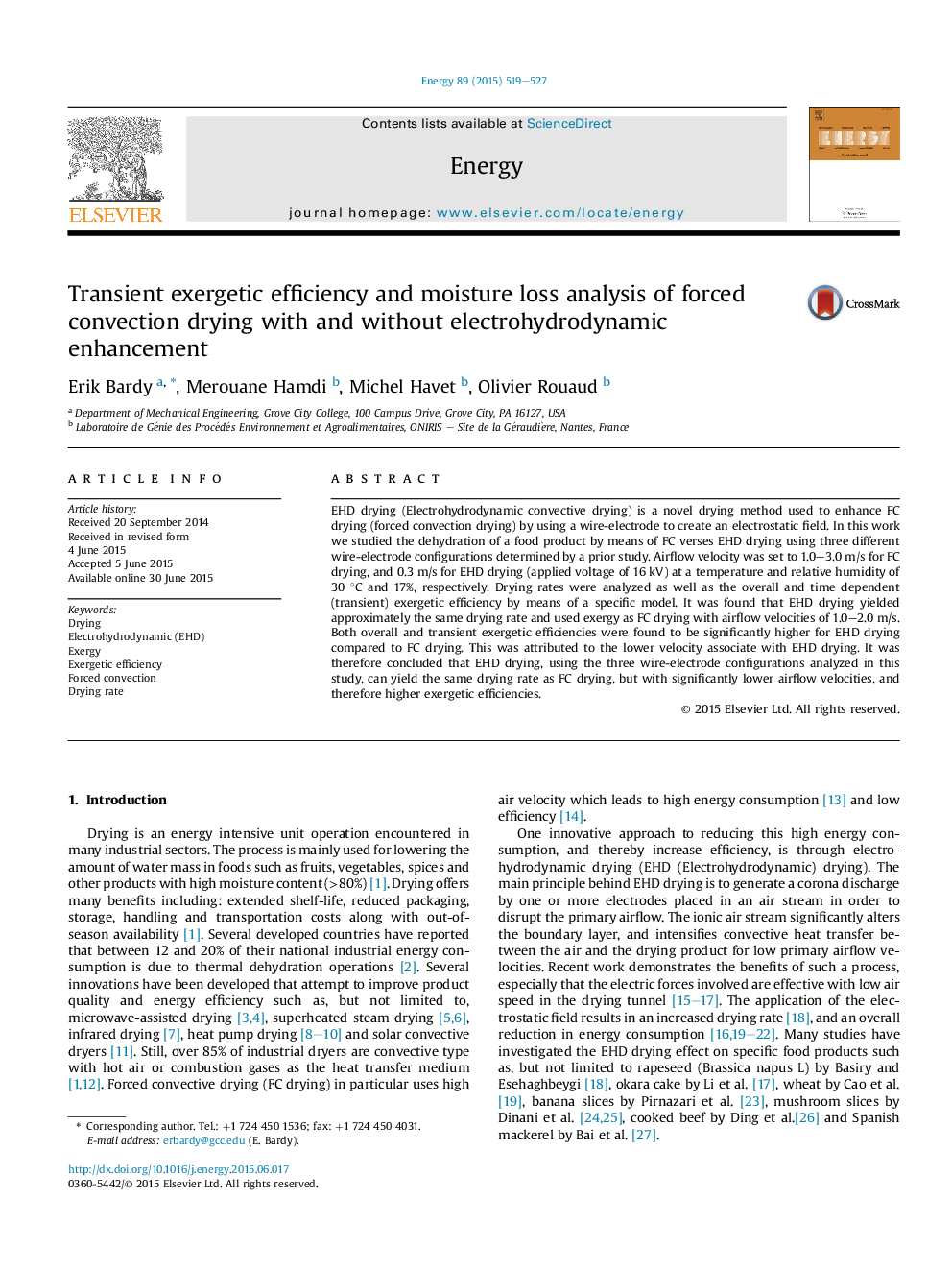| Article ID | Journal | Published Year | Pages | File Type |
|---|---|---|---|---|
| 1731927 | Energy | 2015 | 9 Pages |
Abstract
EHD drying (Electrohydrodynamic convective drying) is a novel drying method used to enhance FC drying (forced convection drying) by using a wire-electrode to create an electrostatic field. In this work we studied the dehydration of a food product by means of FC verses EHD drying using three different wire-electrode configurations determined by a prior study. Airflow velocity was set to 1.0-3.0 m/s for FC drying, and 0.3 m/s for EHD drying (applied voltage of 16 kV) at a temperature and relative humidity of 30 °C and 17%, respectively. Drying rates were analyzed as well as the overall and time dependent (transient) exergetic efficiency by means of a specific model. It was found that EHD drying yielded approximately the same drying rate and used exergy as FC drying with airflow velocities of 1.0-2.0 m/s. Both overall and transient exergetic efficiencies were found to be significantly higher for EHD drying compared to FC drying. This was attributed to the lower velocity associate with EHD drying. It was therefore concluded that EHD drying, using the three wire-electrode configurations analyzed in this study, can yield the same drying rate as FC drying, but with significantly lower airflow velocities, and therefore higher exergetic efficiencies.
Related Topics
Physical Sciences and Engineering
Energy
Energy (General)
Authors
Erik Bardy, Merouane Hamdi, Michel Havet, Olivier Rouaud,
